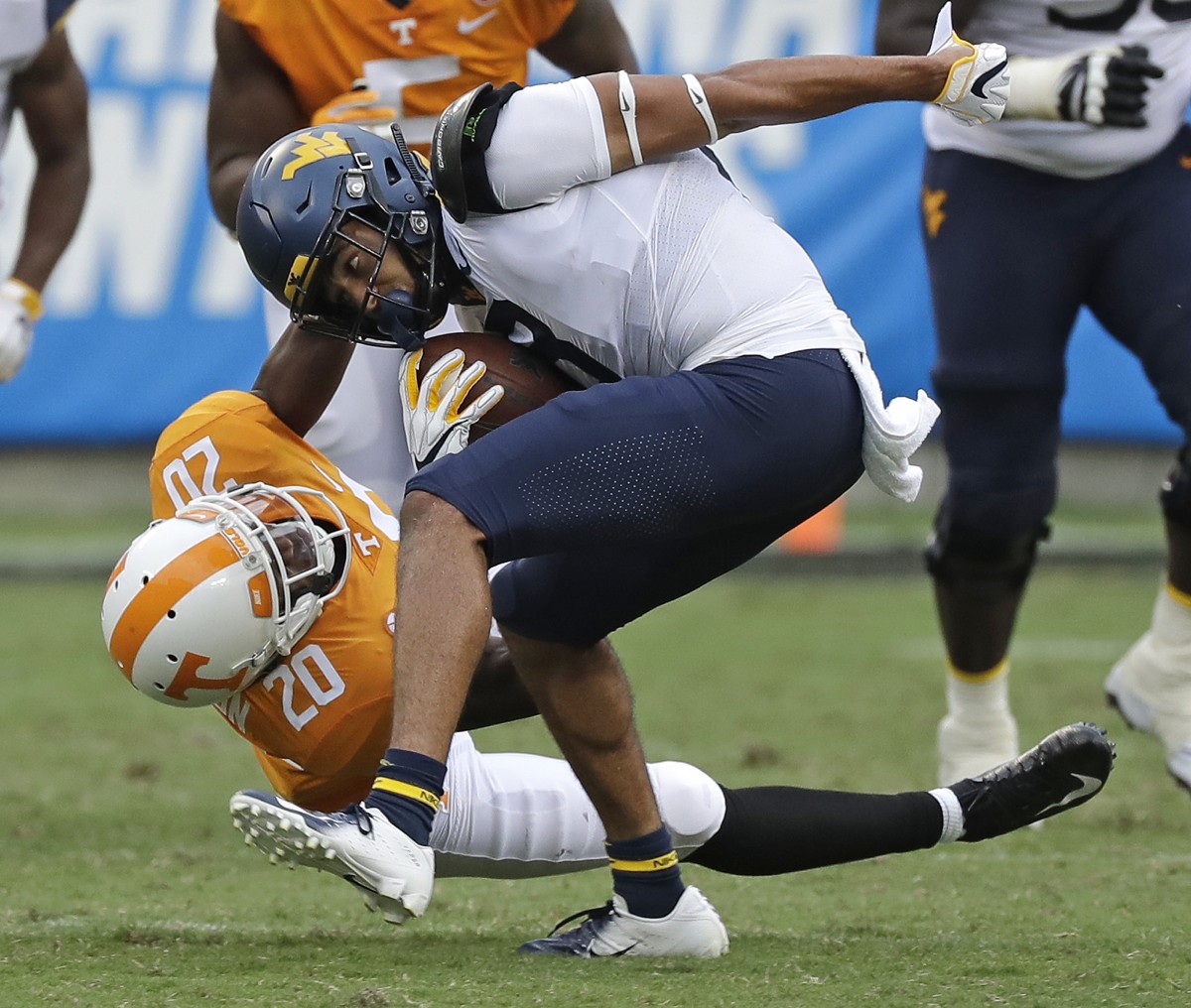MORGANTOWN — A rule of thumb in college football is this: If you rank behind Illinois in a major statistical category, there’s room for improvement.
Despite its prolific offense, West Virginia found itself in that position last season on third down. The Mountaineers converted just 33.3 percent of their third-down chances ranking 111th in the country. And that was worse than Illinois, which has spent the better part of the decade in or near the Big Ten basement. The Illini were 110th with a 33.5 percent conversion rate.
Very little has changed for the Illini, who are down to 32.6 percent on third down this season. Much has changed for the Mountaineers, who are among the nation’s best third-down offenses with a 60-percent conversion rate.
So what’s different?
“There’s a lot to it,” said West Virginia offensive coordinator Jake Spavital. “We’ve had a ton of conversations about it. I think a lot of it goes down to the amount of time we spent on third downs. We sit down as a staff, and I go through it three or four times a week with the staff to make sure we’re on point with what we want to call in certain situations.”
The Mountaineers have faced 20 third downs in their first two games, calling 16 passes and four runs in those situations.
By percentage, the run game has actually been the most successful third-down move. West Virginia has turned three runs into first downs and is averaging 7.25 yards per carry on those plays. It certainly helps that all of those situations were in what coaches like to call “third-and-manageable.” WVU had less than 3 yards to go on all of its running plays.
“That’s a big part of it. We have first-down goals and second-down goals,” said WVU quarterback Will Grier. “We try and hit those as much as we can.”
Obviously, those goals aren’t always met. The Mountaineers have faced 10 third-and-long situations. But even when facing 7 or more yards to reach the first-down marker, West Virginia has converted six of those opportunities.
Grier is 7-of-10 for 135 yards and a touchdown on third-and-long.
“A lot of it is a mindset,” Grier said. “Knowing where the sticks are and pushing the pile an extra yard. Making a tough catch. We emphasize the importance of making plays on these critical downs. It changes games, just staying on the field.”
As good as the Mountaineers have been, it’s important to note that their current rate of success is almost certainly unsustainable.
Thanks in part to the N.C. State game getting canceled, no team in the country has faced fewer third downs than West Virginia. Furthermore, no college team in the last 10 years has finished the year with a 60-percent conversion rate. On average, fewer than 10 teams per year convert more than half of their third-down situations.
But even if the percentages dip over the course of a long season, West Virginia has a chance to be one of the nation’s best third-down teams this season. And that change could be one of the keys in lifting the Mountaineers from the middle of the pack to a Big 12 title contender.
AHickey@DominionPost.com
Twitter @bigahickey




